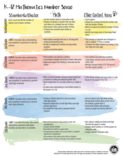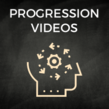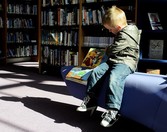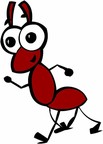
Number Sense Progression Document
OSPI has created a progression document of the Number Sense strand for use by teachers in all subject areas.
Math Teachers: Use this document to further your understanding of the coherence of the Number Sense strand across the grade levels.
Other Content Areas: Use this document as a resource when planning your lessons. Increase your understanding of what math skills you can expect students to be able to access and what you can reinforce as part of your lesson to strengthen cross-content integration.
|

Number Sense Progression Video Series
Whether you are an elementary or high school teacher, a big way to increase your students' access to mathematics is for you to have a solid understanding of learning progressions and the models used in earlier grades. An excellent resource for this is the progression video series that Graham Fletcher has put together. Each video is 7 minutes or less and is packed with important information.
Check out the videos here
|
 |

Clothesline
A great instructional routine to build number sense is called Clothesline.
In the Clothesline routine, students consider and discuss how to place and space numbers in relation to each other on an open number line. Students strengthen their understanding of number relationships, relative magnitude, and equivalencies through this routine. The dynamic nature of the clothesline allows students to explore, manipulate, and make sense of math concepts without memorizing definitions. Click Here to explore this routine.
This routine is not confined to math:
Social Studies: Create an interactive timeline of events
Science: Organize cycles or time periods
Language Arts: Chart the events of a book
|


Math Through Reading
Books about math are the perfect cross-curricular tool to introduce your students to complicated concepts and mathematical thinking. Books help students put mathematical concepts into real-world context.
Though a simple internet search will bring up hundreds of titles, there is an award specifically designed to recognize books that are both engaging and rich in mathematics.
Award-winning Mathical titles are selected by a nationwide committee of mathematicians, educators, librarians, early childhood experts, and others. Each year’s selections join a growing list of stories ranging from picture books and graphic novels to chapter books and young adult literature,
Click here to learn more about the books that have received the Mathical Award, and explore the educator guides that accompany some of the books.
|

Bringing Art into the High School Math Classroom
As an extension of the Arts and Music module of Modeling Our World With Mathematics, students from Mt Tahoma High School had the opportunity to visit the Tacoma Art Museum. While visiting, a museum docent helped them explore how perspective affects art, and tried their hand at creating their own two-perspective drawing of Tacoma’s varied and interesting skyline. See them here using painters’ tape on windows to create perspective lines to guide the development of their scenes.
Math: G.SRT.2, G.MG.1
Art: VA:Cr1.1.I, VA:Re7.1.I, VA:Re7.2.I
Click here to view course materials for Modeling Our World With Mathematics.
|

Math in Civics
The Civics Education Initiative mission is to ensure that every student is provided with high-caliber civics education, from kindergarten through high school. As part of the initiative, elementary lessons have been created around children's books. The book Hey, Little Ant by Phillip M. Hoose allows for multiple cross content connections. While these examples are for 1st grade, it can be adapted for other grade levels.
Math: 1.MD.2- Students measure the height of the boy in 'ant units'. Click here for a more detailed lesson.
Civics: SSS3.1.1- Facilitate a discussion about the different points of view (boy and ant) in the book. Talk about how this relates to the relationship between humans and the environment.
Science: ESS3.C- Students discuss how their personal decisions impact the environment. Specifically, how their lives are interconnected with the lives of ants.
Reading: RL.1.4- Students identify words and phrases in story that suggest the feelings of the boy and ant.
Writing: W.1.1- Students write an opinion piece about whether the boy should squish the ant or how the story could end.
Music: Pr4.3.1- Listen to the song together as a class, identify and examine how the ant's and boy's feelings are expressed through the song.
Art: Re8.1.1- Put together a collection of ant images (including a picture of a real ant and the ant from the book) and have students compare the images. Have students create a piece of ant art that can accompany their opinion writing.
|
|
|